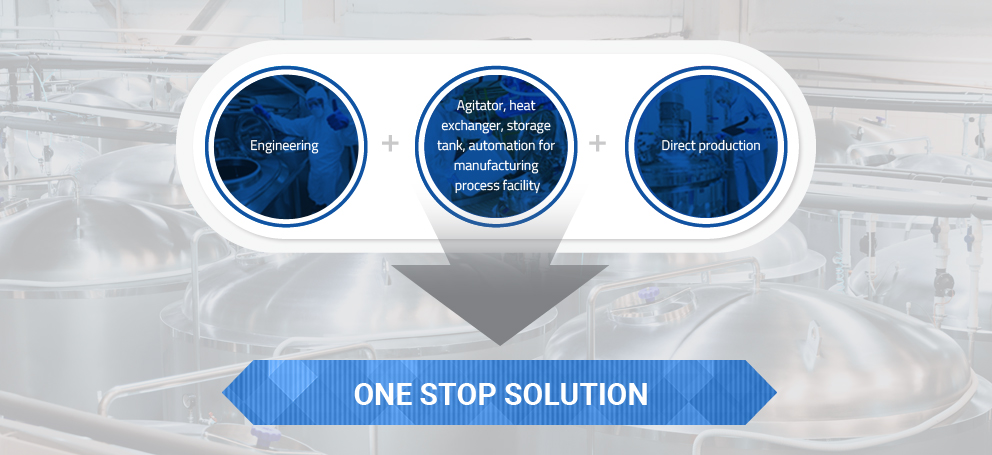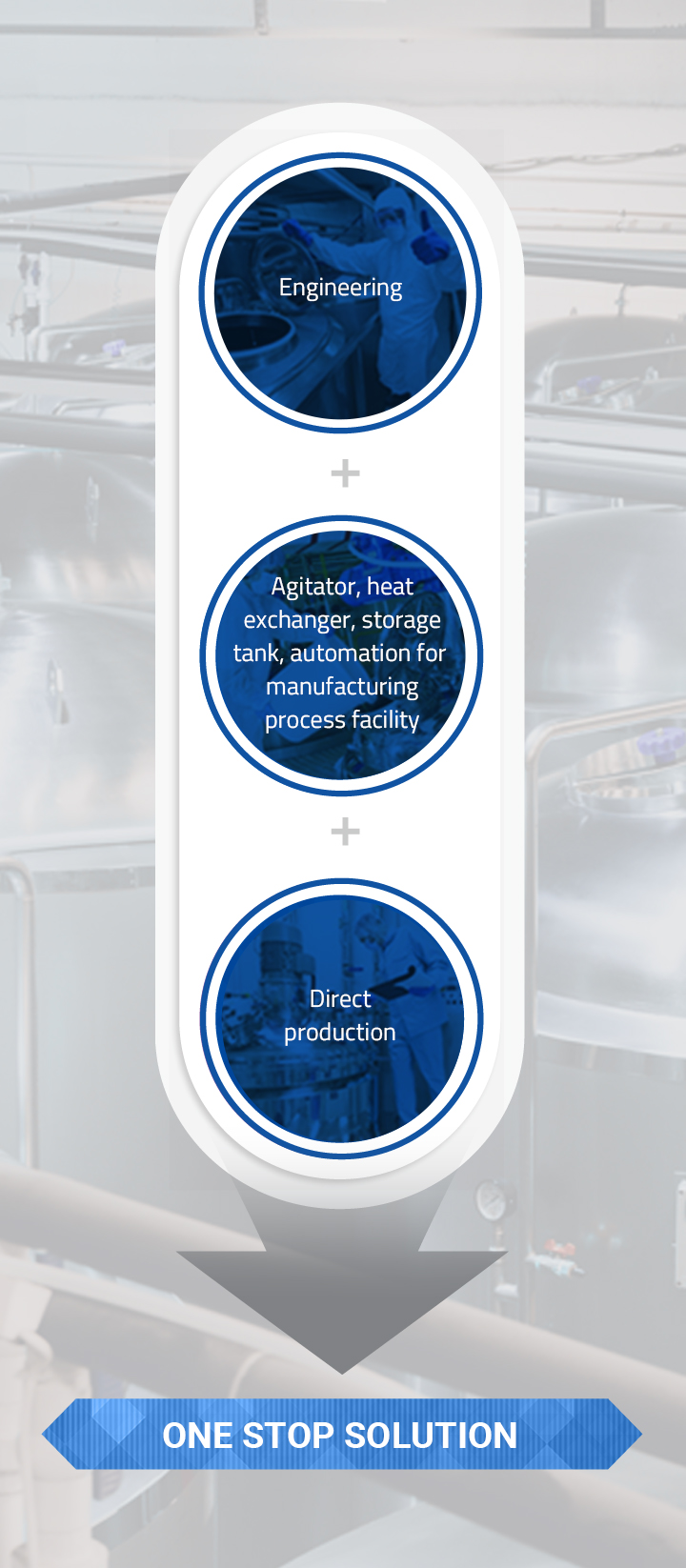technology
Total Service
JUNGANG-ENG provides a one-stop solution spanning from specialized equipment production including agitators,
heat exchangers, and storage tanks, to automation for manufacturing process facilities.
Polishing
A surface polishing process is applied to the agitator, reactor, and tank to prevent internal slurry adsorption. This polishing process is divided into mechanical polishing and electro-polishing. Unlike other companies JUNGANG-ENG established an polishing department when it was founded in 1987 to provide high quality in-house polishing by highly skilled employees rather than relying on outsourcing. Experience products with a completely different level of appearance from our competitors thanks to the technical skills we accumulated by producing a vast number of products.
Mechanical polishing
Mechanical polishing smooths and polishes the surface of processing products using belts and wheels combined with various abrasive agents. This includes grinding, polishing, and buffing processes to improve product surface functionally and aesthetically. It causes minor plastic deformation on the surface of processing products as surface defects are removed, such as the traces of grinding, scratches, and holes resulting from work by even skilled workers.
Mechanical polishing process
The mechanical polishing process consists of grinding work as a first step, polishing (abrasion) as a second step, and buffing (buff abrasion, gloss) as a third step. Polishing is a rougher abrasion process than buffing, while grinding is rougher than polishing. Grinding processes carve or bevel a metal surface using a whetstone (grinding disk). Polishing is abrasive machining by rotating an emery abrasive (glue) coated wheel made of fabric, leather, or flet at a high speed of 2,000~3,000rpm. The surface roughness of a processing product can be adjusted by changing the grit size of emery. Buffing is applying an abrasive using abrasive tools made of cloth or hemp and trimming the surface of processing products to a shine. A mechanical polishing process requires experts who have several years of experience and skill.
Electro-polishing
Electro-polishing dissolves the impurities and oxide coating attached on the surface of processing products to make a glossy surface using the dissolution of the anode. It polarizes metal to be polished and electrolyzes it with high-current density in a short time in an electrolyte to remove dirt from metal surface and dissolve bulges, resulting in a smoother face without any foreign substance compared to mechanical polishing. Electro-polishing creates a protective coat with excellent corrosion resistance and reduces surface roughness by up to 50%. It also suppresses fatigue destruction and the growth of bacteria by removing hydrogen from metal surface and inside. The metal will have a bright and smooth gloss after electro-polishing.
Compare
| Mechanical polishing |
|---|
| Adjust surface roughness through surface grinding and polishing |
| There is residual stress and a processing deterioration layer due to the physically transformed surface. |
| Sufficient washing is required, as abrasive materials or compounds can remain from polishing. |
| Able to remove deep scratches or irregularities easily |
| Electro-polishing |
|---|
| Adjust surface roughness through surface polarization and electrochemical dissolution |
| No residual stress or processing deterioration layer, because there is no physical transformation. |
| No adhesives or compounds remain on the surface |
| Minor scratches or irregularities can be ground easily, but deep scratches or irregularities are difficult to remove with electro-polishing. |
Surface Finishing
Available boards and surface finishing for weld bead in JUNGANG-ENG are as follows.
| Stainless Steel | ||||
|---|---|---|---|---|
| NO.1 (1D) | NO.2B (2B) | HL | PL | EP |
 |
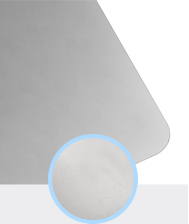 |
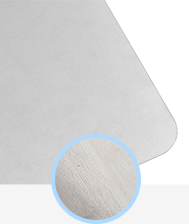 |
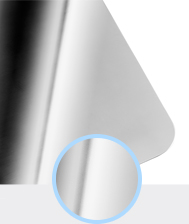 |
 |
| Heat treatment and acid treatment after hot rolling | Temper rolling NO.2D that was treated by heating and acid after cold rolling | Product with continuous polished pattern (such as hair texture pattern) using a suitable grit size for polishing paper | Polishing product with considerable glossy and reflect function | Electro-polished product after polishing |
| Silver-white dull gray (no glint) | Dull gray gloss (not as glossy as a mirror) | Shining thin polished pattern | Mirror-like gloss | Gloss similar to chrome coating |
| Surface finishing for weld bead | ||||||
|---|---|---|---|---|---|---|
| Weld bead | Brush | Pickling | Grinding | Hairline | Polishing | Electro-polishing |
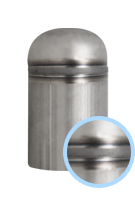 |
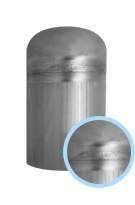 |
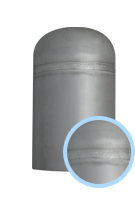 |
 |
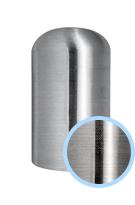 |
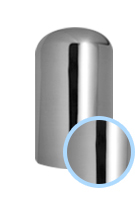 |
 |
Surface Roughness In Polishing Area
Surface roughness is determined by the grit size of the emery abrasive. Surface roughness may vary depending on the worker’s skill, even when products are processed through an identical method.
| Grit size | Middle line average roughness (Ra) | Maximum height roughness (Ry) | Ten-point average roughness (Rz) | Square root average roughness (Rq) | |
|---|---|---|---|---|---|
| (NO.) | Micrometer | Microinch | Micrometer | Micrometer | Microinch |
| 80 | 3.2a | 125 | 12.5s | 12.5z | 137.5 |
| 180 | 1.6a | 63 | 6.3s | 6.3z | 69.3 |
| 250 | 0.8a | 32 | 3.2s | 3.2z | 35.6 |
| 300 | 0.4a | 16 | 1.6s | 1.6z | 17.6 |
| 350 | 0.25a | 10 | 1.0s | 1.0z | 11 |
| 400 | 0.2a | 8 | 0.8s | 0.8z | 8.8 |
| 600 | 0.1a | 4 | 0.4s | 0.4z | 4.4 |
- Ra : Surface roughness is set using the deviation average value of all peaks and valleys out of the average line throughout the base length in the roughness curve.
- Ry(Rmax) : Surface roughness is set using the perpendicular distance from the height peak to the deepest valley in the sectional curve.
- Rz : Surface roughness is set using the difference between the average height of the top 5 peaks and the average depth of the bottom 5 valleys in the sectional curve.
- Rq(RMS) : RMS for the average of entire zone
